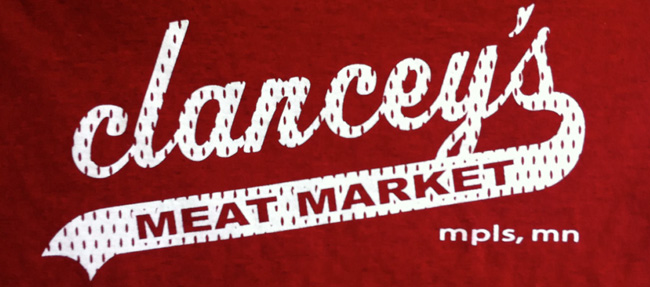
About the Farms in the Lens series: Much of what we write within these pages is focused on the restaurants of Minneapolis and St. Paul. But much of what we eat at those tables comes from farms around the state. With underwriting from Clancey’s Meats and Fish, we’ve set out to document a half dozen of these farms, focusing on the relationship between humans and animals. Check out our complete Farms in the Lens series, including: Wild Acres, Hidden Stream, Shepherd’s Way, Redhead Creamery, Twisted Suri Alpaca Ranch, and Paradox Farm.
Redhead Creamery is run by Alise Sjostrom and her husband Lucas alongside her parents’ dairy farm, Jer-Lindy Farms. It was founded this year with assistance from a successful Kickstarter campaign that raised $41,495 — more than $6,000 beyond its initial goal.
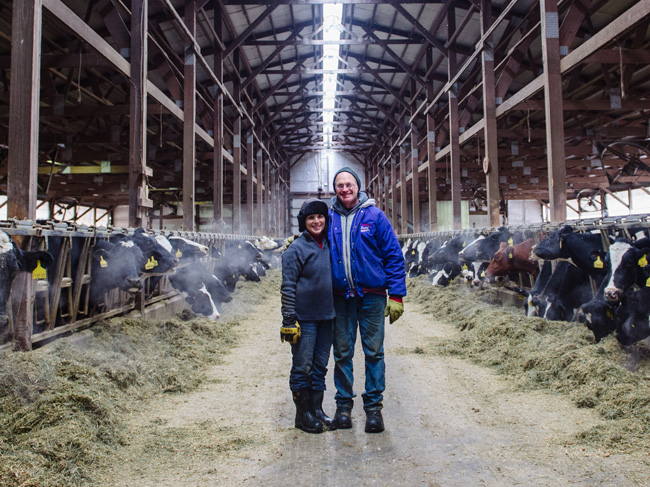
The founders of Jer-Lindy Farms are Jerry and Linda Jennissen. They grew up on dairy farms and met at a calf show when they were children.
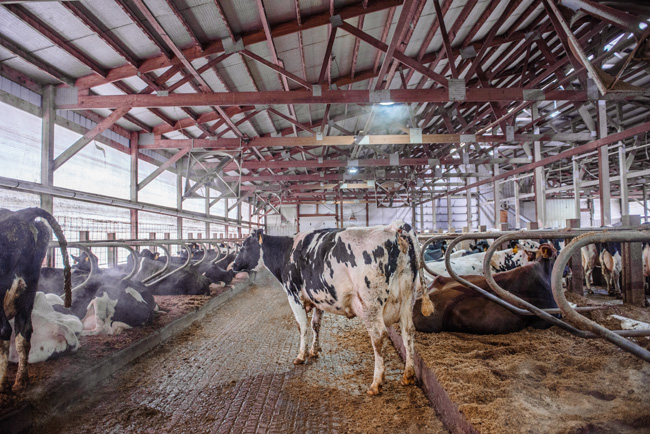
Many years later, they married. They started their own farm (in Brooten, Minn.) in 1983.
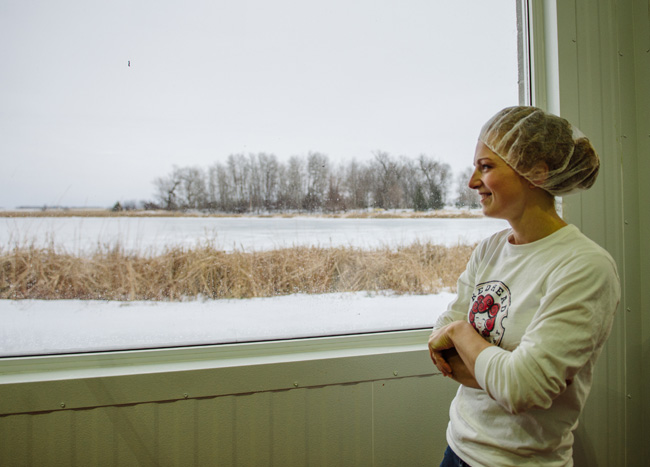
“It is amazing to be on a farm that my parents basically built from scratch,” says Alise.
 Milk from the farm is pumped directly into the tanks at the cheese plant, where Alise makes it into curds (which are sold fresh, or turned into cheddar cheese). Besides providing extremely fresh milk for the cheese, the direct pumping of the milk also reduces heating and cooling costs.
Milk from the farm is pumped directly into the tanks at the cheese plant, where Alise makes it into curds (which are sold fresh, or turned into cheddar cheese). Besides providing extremely fresh milk for the cheese, the direct pumping of the milk also reduces heating and cooling costs.

The farm has around 200 cows, and produces most of the feed for them year round.
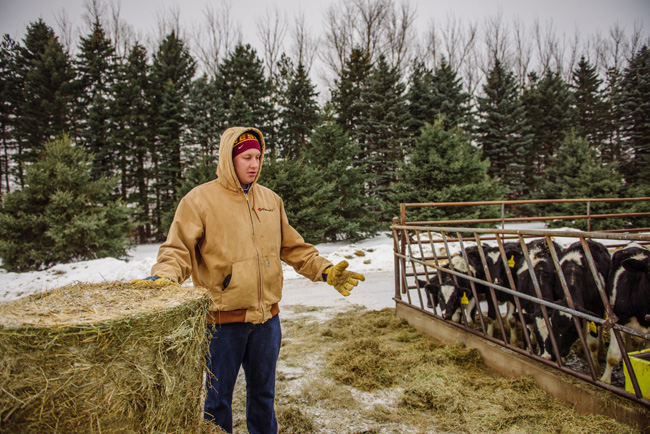
“We kind of have to be good at everything: growing crops [to make into silage], and growing cows,” says Lucas.
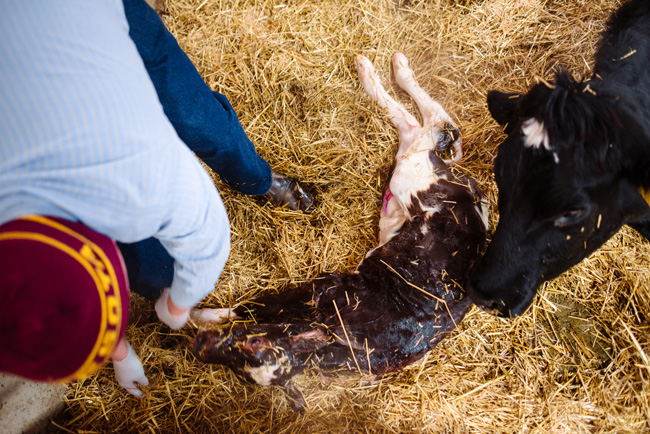
“Calves are born year round, most without assistance,” says Linda. “We keep them here for about two months, and then, after we take them off of milk, they are adjusted to living with other animals.”
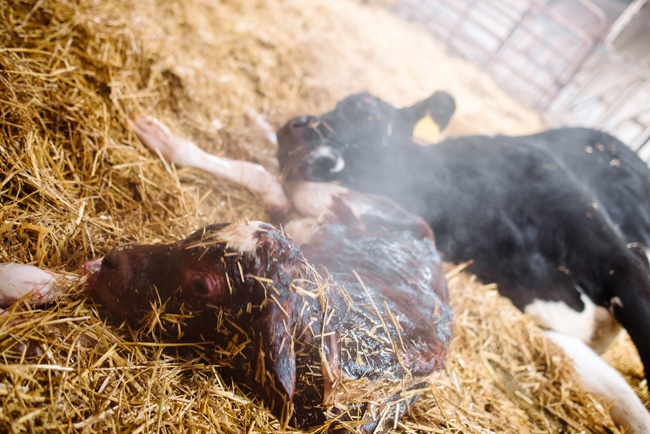
This red Holstein calf is only seconds old. Red color is a recessive trait in Holsteins and has recently come into favor.
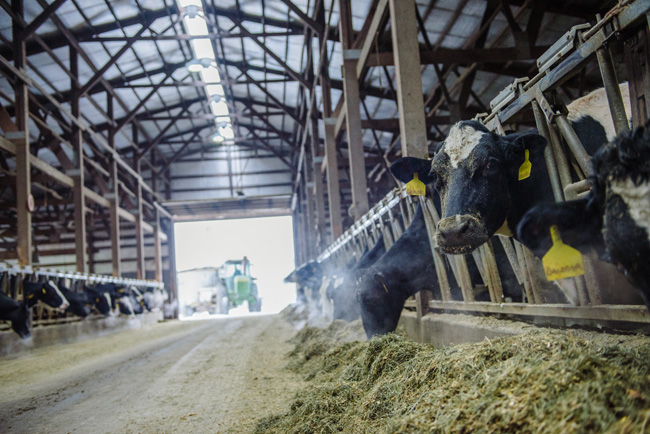
“Dairy cows have the best reproductive / milk cycle ever,” says Lucas. “Once they have a calf, they start giving milk, and their lactation cycle lasts about 300 days, but starting at 60 days they can get pregnant again.”
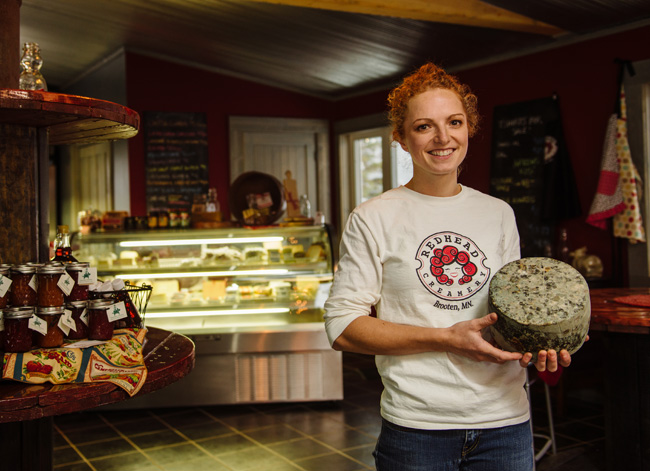
“I was a senior in high school when I went on a field trip with 4H to Crave Brothers [in Wisconsin], and I thought this could really work,” says Alise. “I came home and made a declaration to my parents that we were going to make cheese.”

“Two days after we got married, we moved to Vermont and I worked in the Grafton Village Cheese store,” says Alise. “[Before that,] I really didn’t realize the world of artisan cheese.”
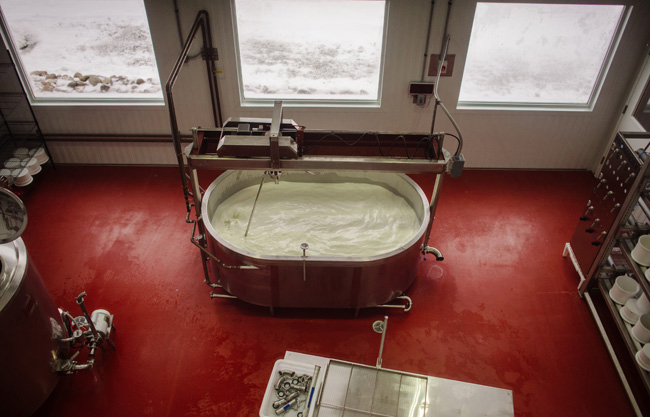
“When we lived in Vermont, we took a trip every weekend to see a different cheesemaker, and I realized: ‘We could do this,'” says Lucas.

